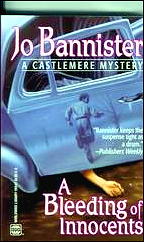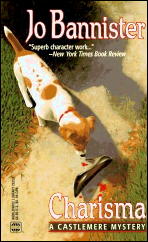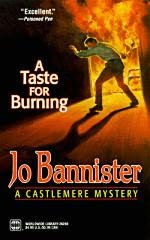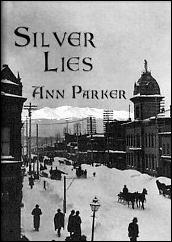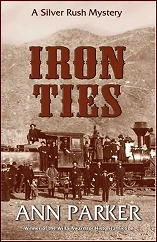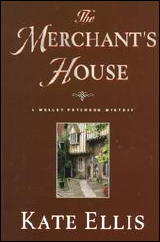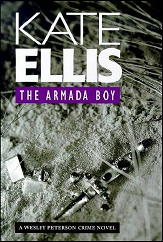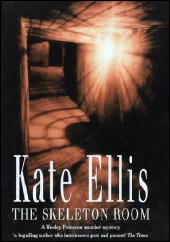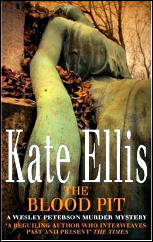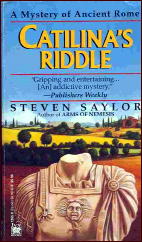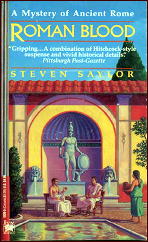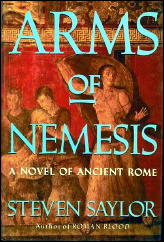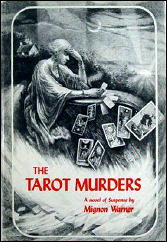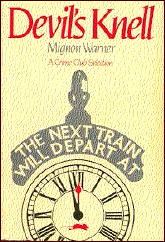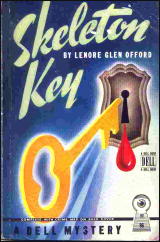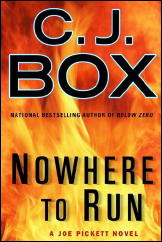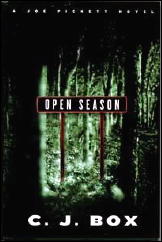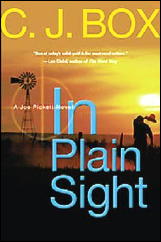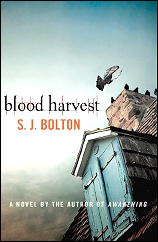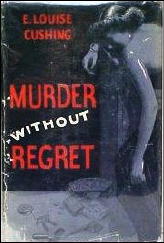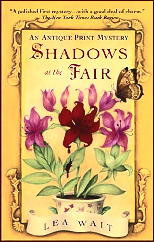MIGNON WARNER – Speak No Evil. Doubleday Crime Club, US, hardcover, 1985. Robert Hale, UK, hc, 1986. Hardcover reprint: Detective Book Club, 3-in-1 volume, no date given.
There are some interesting things to be found in Mignon Warner’s mystery bibliography. She was born in Australia but lived primarily in England, and of her eleven books (as of 1994), all take place in the U.K.
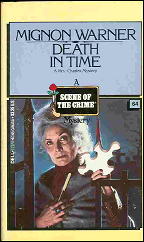
What’s unusual, though, is that several of them appeared in the U.S. before the British edition, and one, Death in Time (1982), was published only in this country. Three early non-series books were published only in England, and are extremely scarce, with (doing a quick search) none presently available on the Internet, at least at the moment. [Update: This is no longer true, but the few copies that are available are pricey.]
Warner’s series character was Mrs. Edwina Charles, a clairvoyant detective who appeared in eight of the eleven, including Death in Time. Speak No Evil, the one in hand, came close to being the last one, but some nine years later another one appeared. Under what circumstances the curiously titled Exit Mr. Punch (1994) finally was published, with no US edition, I cannot say, and I’d like to know.
Hubin, by the way, calls this book a paperback in the Revised Crime Fiction IV, but several copies for sale online are described as having dust jackets, so that’s something we now know that he didn’t (until now).
While I have several of Mrs. Charles earlier adventures, this is the first I’ve read, and besides the actual mystery, she remains also something of a mystery to me. While her given name is actually Adele, she’s revised and adapted her ex-husband’s name, Edwin Charles, for use as her own, even though (on page 26) she considers her marriage to him a very bad mistake. Dating back to the depressing days of “Charles the Third,” she says, there are “names, names of some very important people socially and politically, the publication of which could place them (and her) in very hot water.”
These people may have been clients in those days, but in any case Eddie Charles has an invisible something he’s holding over her. Which brings us to (at last) the case at hand. When is the last time you read a mystery in which a small-time thief (calling himself Jimmy Valentine) hires a private detective (Mrs. Charles) to investigate the strange death (deemed suicide by the authorities) of a another private detective? The latter, also female, is named Tony Manners.
In case you missed the connection, Jimmy Valentine was sent by Mrs. Charless former husband, and she considers having to agree to look into Tony’s death a form of blackmail. It’s a first for me, too.
Also puzzling to me — which is hardly the first time — is — without reading the earlier books in the series — why Mrs. Charles is constantly referred to as a clairvoyante. She doesn’t do anything that even slightly resembles clairvoyeuring until page 163, when a seance is held, which admittedly does help in bringing the case to a close.
Before then, the search for Ms. Manner’s killer, if indeed it was a murder, is a perfectly ordinary one, in a muddled, rambling sort of fashion. Lots of connections between people whose names come up in the investigation, too many coincidences (Mrs. Charles’s very words on page 70), with lots of false trails for the unwary reader to make their down.
Great stuff, I thought, even while I was totally mystified. Or while I was being totally and massively misdirected. Sleight-of-hand such as this is rather uncommon, and if that’s the kind of mystery you enjoy, I think you’ll like this one.
— August 2003 (slightly updated).
The Mrs. Edwina Charles series —
1. A Nice Way to Die. Hale 1976.
2. The Tarot Murders. Hale 1978.
3. Death in Time. Doubleday 1982.
4. The Girl Who Was Clairvoyant. Hale 1983.
5. Devil’s Knell. Hale 1984.
6. Illusion. Hale 1985.
7. Speak No Evil. Hale 1986.
8. Exit Mr. Punch. Breese 1994.
[UPDATE] 08-19-10. I don’t know about you, but I’m intrigued by my own review. I have to confess that I do not remember this book — only that I read it, and in the Detective Book Club edition — but that last paragraph I wrote is a clincher. I’ll have to read it again.
I don’t think either the author or her series character was ever very well-known, and I’m sure both are quite forgotten now.
[UPDATE #2] Later the same day. Here’s some intriguing news from British mystery bookseller Jamie Sturgeon:
Hi Steve,
There are two more Edwina Charles books by Mignon Warner – The Devil’s Hand and The Tarot Reading – both published by Robert Hale in 2008
http://www.halebooks.com/display.asp?K=9780709086215&pge=hale&st2=not+67351&sort=sort_date%2Fd&sf1=Keyword&sf2=lcode&x=20&st1=warner&y=10&m=1&dc=2
Regards,
Jamie
Me again. This is intriguing news. I wonder where these books came from. Is Mignon Warner actively writing again? There are no dates for her in CFIV, so at the moment she’s very much a woman of mystery.
(To see details of the second book, you have to follow the link in the first page of two that the one above sends you to.)
[UPDATE #2] 09-12-10. I’ve postponed saying anything until/unless I had a more definitive answer, but based on an online plot description, Jamie and I now suspect that The Devil’s Hand is a retitled reprint of Devil’s Knell, and therefore it’s a good possibility that The Tarot Reading is the same for The Tarot Murders.
